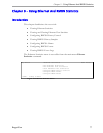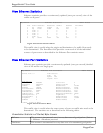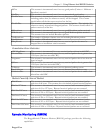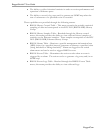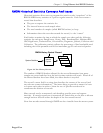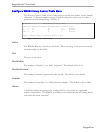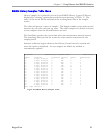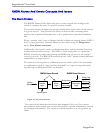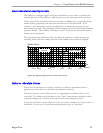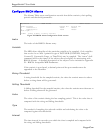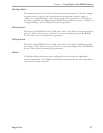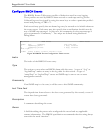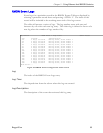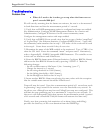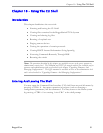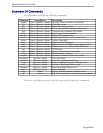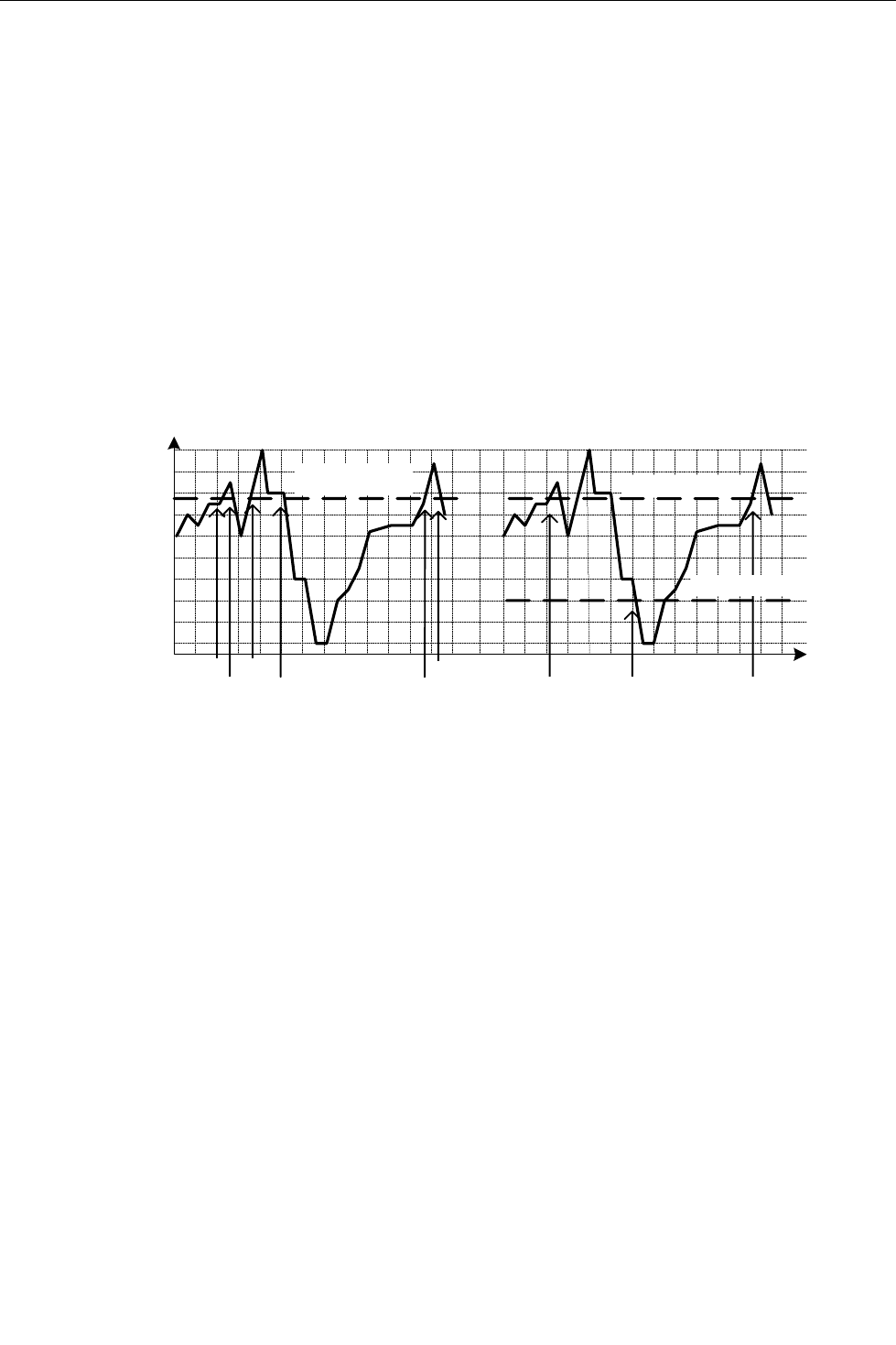
Chapter 9 - Using Ethernet And RMON Statistics
Alarm Generation And Hysteresis
The ability to configure upper and lower thresholds on the value of a measured
statistic provide for the ability to add hysteresis to the alarm generation process.
If the value of the measured statistic over time is compared to a single threshold,
alarms will be generated each time the statistic crosses the threshold. If the
statistic’s value fluctuates around the threshold, an alarm can generated every
measurement period. Programming different upper and lower thresholds eliminate
spurious alarms. The statistic value must “travel” between the thresholds before
alarms can be generated.
The following figure illustrates the very different patterns of alarm generation
resulting from a statistic sample and the same sample with hysteresis applied.
Statistic Value
Time
Upper Threshold
Upper = Lower
Threshold
Lower Threshold
Alarms
Rising
RisingFalling
Rising Rising
Falling Rising
Falling
Falling
Figure 58: Applying Hysteresis to Alarm Generation
Delta vs. Absolute Values
There are two methods to evaluate a statistic in order to determine when to
generate an event; these are the delta and absolute methods.
For most statistics (such as line errors) it is appropriate to alarm when a rate is
exceeded. The alarm record defaults to the “delta” measurement method, which
examines changes in a statistic at the end of each measurement period.
It may be desirable to alarm when the total, or absolute, number of events crosses a
threshold. In this case, set the measurement period type to “absolute”.
RuggedCom
85



